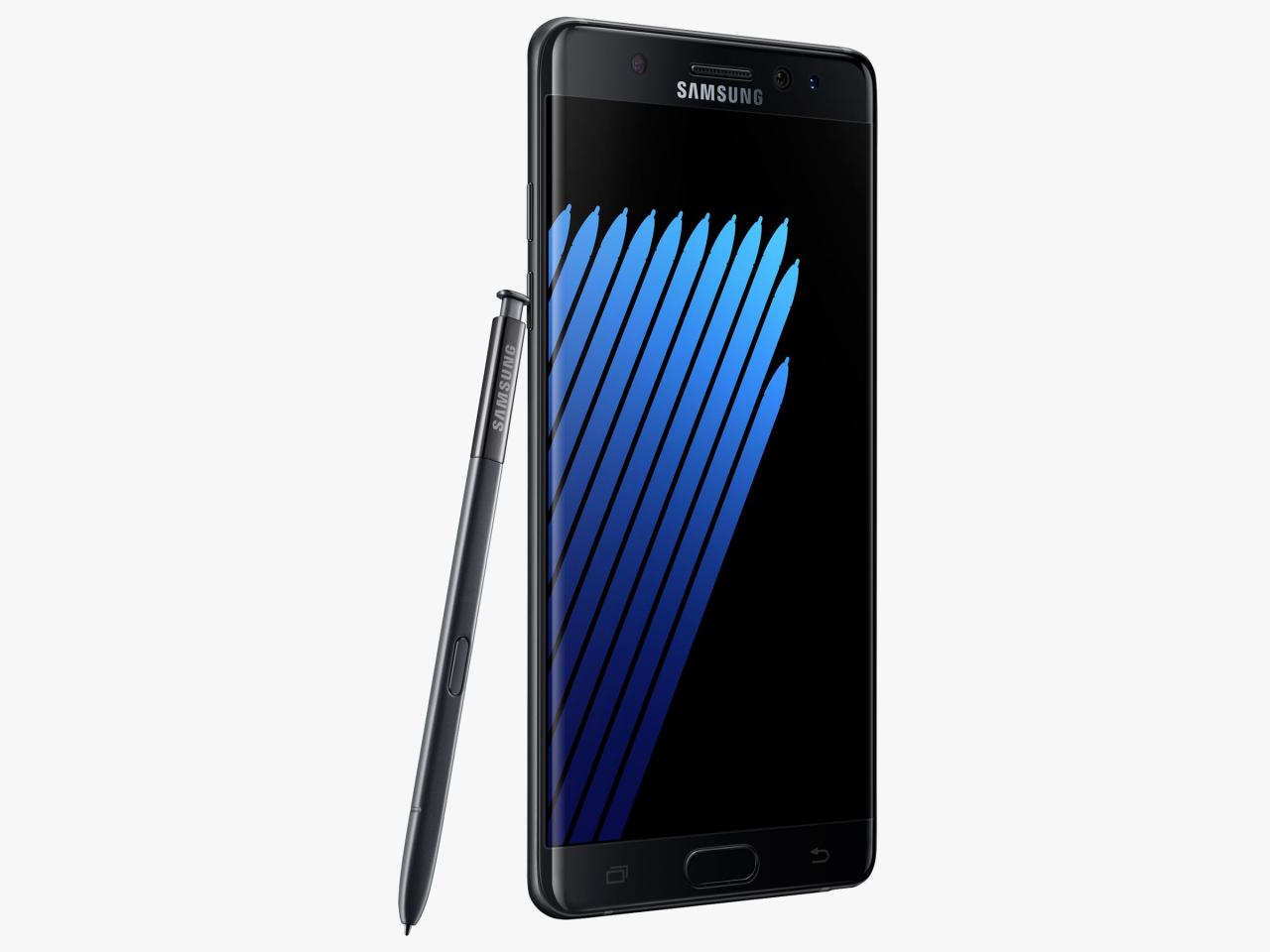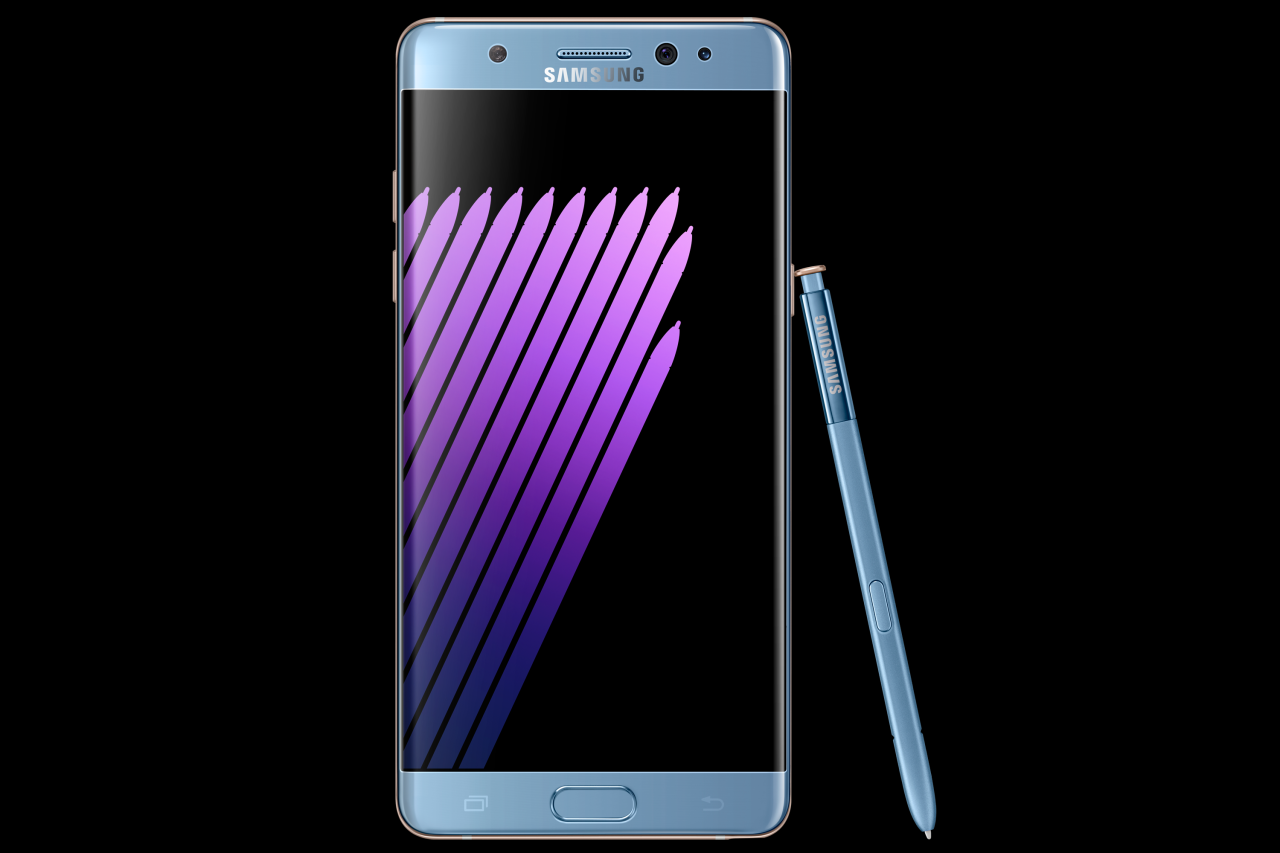samsung galaxy note 7 stands as a pivotal device in smartphone history, representing both groundbreaking innovation and significant challenges. Launched in 2016, it boasted impressive features like an edge-to-edge display, S Pen functionality, and top-tier performance that captured consumer attention. However, its journey was marred by safety issues, leading to a historic recall that would forever change how manufacturers approach smartphone safety and design.
This device not only set a high bar for technological advancements but also highlighted the intense competition in the smartphone industry, as it faced formidable rivals. As we delve deeper into the historical context, technical specifications, safety concerns, and its lasting legacy, the saga of the samsung galaxy note 7 unfolds, revealing lessons that resonate even today.
Historical Context of the Samsung Galaxy Note 7

The Samsung Galaxy Note 7 was launched on August 19, 2016, as part of Samsung’s Note series, which had gained significant popularity for its large displays and productive stylus features. This device was highly anticipated, following the success of its predecessors, particularly the Note 5. Upon release, the Note 7 received critical acclaim for its design and capabilities, but its place in history would ultimately be marked by controversy and safety concerns.
The Galaxy Note 7 was equipped with cutting-edge features that distinguished it from competitors at the time. It boasted a 5.7-inch QHD Super AMOLED display, a powerful Exynos 8890 processor or Qualcomm Snapdragon 820, depending on the region, and 4GB of RAM, which was standard for high-end devices. The device also introduced an upgraded S Pen, water resistance (IP68 rating), and a dual-edge display that was becoming a trademark of Samsung’s flagship models. Its camera system, featuring a 12MP rear camera with Dual Pixel technology, was praised for its low-light performance and speed.
Market Competition at Launch
During its launch, the Galaxy Note 7 faced stiff competition from several flagship smartphones that were also vying for consumer attention. The following devices were among its main competitors, each offering unique specifications and features:
- Apple iPhone 6s Plus: Released in September 2015, this device featured a 5.5-inch Retina HD display and the A9 chip, which was renowned for its performance. The iPhone 6s Plus also offered a strong ecosystem with iOS and a robust app store.
- Google Pixel (released later in 2016): Though not immediate competition, the Pixel series was intended to showcase Google’s vision for Android, emphasizing camera quality and software integration.
- LG V20: Released in September 2016, the V20 was known for its multimedia capabilities, featuring a dual-camera setup and a secondary display for notifications and shortcuts.
- OnePlus 3: Known for its aggressive pricing and flagship specifications, the OnePlus 3 offered a compelling alternative with a 5.5-inch display, Snapdragon 820 processor, and 6GB of RAM, appealing to budget-conscious consumers.
The competitive landscape was characterized by rapid innovation, with each manufacturer striving to outdo the others in delivering premium features and superior user experiences. The introduction of the Note 7 came at a time when large-screen devices were gaining traction, making it crucial for Samsung to capitalize on this trend while maintaining its reputation for quality and innovation.
“The Galaxy Note 7 set a high standard for phablets with its blend of productivity features and premium design, but the subsequent safety issues overshadowed its promising entry into the market.”
Technical Analysis of the Samsung Galaxy Note 7

The Samsung Galaxy Note 7 was a flagship device notable for its cutting-edge technology and innovative features. Launched in 2016, it aimed to set a new benchmark for high-end smartphones, showcasing powerful hardware and an intuitive user interface that appealed to tech enthusiasts and professionals alike.
The hardware components of the Note 7 played a crucial role in delivering its impressive performance. It was equipped with a Qualcomm Snapdragon 820 or Samsung’s Exynos 8890 processor, depending on the region, both of which offered substantial power and efficiency. Coupled with 4GB of RAM, the device could handle multitasking with ease, allowing users to run multiple applications simultaneously without noticeable lag. Its internal storage options provided a choice of 64GB, expandable via microSD, thus catering to users with varying needs for space.
Hardware Components Contributing to Performance
The hardware design of the Galaxy Note 7 emphasized performance and versatility, integrating several key components that enhanced its usability. These included:
- Processor: The Snapdragon 820 and Exynos 8890 chips utilized advanced 14nm FinFET technology, which not only improved processing speed but also reduced power consumption, contributing to overall device efficiency.
- RAM: With 4GB of LPDDR4 RAM, the device maintained seamless performance in multitasking scenarios, enabling quick app transitions and efficient handling of resource-intensive applications.
- Display: The 5.7-inch Quad HD Super AMOLED display provided vibrant colors and deep blacks, enhancing the visual experience for media consumption and productivity tasks.
- Camera: The Note 7 featured a 12MP rear camera with Dual Pixel technology, allowing for faster focus times and improved low-light performance, which was essential for capturing high-quality images under various conditions.
The software capabilities of the Galaxy Note 7 further distinguished it from its peers in the smartphone market. Running on Android 6.0 Marshmallow out of the box, it featured Samsung’s TouchWiz interface, which provided a user-friendly experience with a plethora of customization options. Unique to the Note 7 was the S Pen, which enhanced productivity and creativity through precise input capabilities and features like Air Command and Screen Off Memo.
Software Capabilities and User Interface Features
The Galaxy Note 7’s software functionalities were designed to maximize the potential of its hardware. Key features included:
- Multitasking: The device supported Split Screen multitasking, allowing users to run two applications side by side, a feature particularly beneficial for professionals and multitaskers.
- Always On Display: This feature enabled users to view essential information such as time and notifications without waking the device, promoting convenience and efficiency.
- S Pen Features: The S Pen incorporated features like Screen Off Memo for quick note-taking, and Smart Select for capturing content from the screen, revolutionizing how users interacted with their devices.
Another critical aspect of the Note 7 was its battery technology, which became a focal point of discussion due to notable safety concerns. The device was equipped with a 3,500 mAh lithium-ion battery, which provided robust performance and longevity for daily use. However, the battery technology employed in the Note 7, which included a dual-cell configuration, led to overheating issues that ultimately resulted in recalls.
Battery Technology Comparison
The battery technology utilized in the Galaxy Note 7 was advanced for its time, but it also faced scrutiny when compared to other smartphones released in the same era. This comparison highlights several key points:
- Capacity: While the Note 7’s 3,500 mAh capacity was competitive against contemporaries like the iPhone 7 (1,960 mAh) and Google Pixel (2,770 mAh), the battery’s design posed a risk of failure.
- Charging Technology: The Note 7 supported fast charging through both wired and wireless methods, allowing users to quickly recharge the device, a feature that was becoming increasingly standard in high-end smartphones.
- Safety Measures: Post-recall, Samsung implemented an 8-point battery safety check for future devices, reflecting a commitment to addressing the issues that arose with the Note 7.
The combination of powerful hardware and innovative software made the Galaxy Note 7 a formidable competitor in the smartphone market. However, the battery technology ultimately overshadowed its strengths, marking a pivotal moment in Samsung’s history and prompting a reassessment of safety protocols in mobile device manufacturing.
Safety Concerns and Recalls
The Samsung Galaxy Note 7 faced significant safety concerns that ultimately led to one of the most notable product recalls in consumer electronics history. These issues were primarily related to the device’s battery, which was found to be prone to overheating and, in some cases, catching fire. Such incidents raised alarms among users and prompted swift action from the company to mitigate the risks and restore consumer confidence.
The safety issues surrounding the Galaxy Note 7 were first brought to light when reports emerged of devices spontaneously igniting or exploding during regular use. Initial investigations attributed these incidents to manufacturing defects in the lithium-ion batteries supplied by Samsung SDI, one of the company’s battery manufacturing divisions. The defects led to internal short circuits, which posed severe safety risks. Subsequently, Samsung announced a global recall of the devices in September 2016, urging customers to return their Note 7s for a replacement or a full refund. The recall affected around 2.5 million units, making it a pivotal moment in the device’s short lifespan.
Response Measures Taken by Samsung
In response to the alarming battery issues, Samsung implemented several key measures aimed at addressing safety concerns and restoring trust among consumers. The company took the following steps:
- Issuance of a global recall: Samsung promptly initiated a massive recall for all Galaxy Note 7 devices, encouraging users to stop using their phones immediately and return them to retailers for refunds or replacements.
- Battery replacement program: For users who opted for a replacement, Samsung introduced a battery replacement program that involved rigorous testing and quality assurance processes to ensure the new batteries met safety standards.
- Enhanced battery safety protocols: Samsung re-evaluated its battery manufacturing processes, incorporating new safety measures such as comprehensive testing and validation to prevent future issues.
- Launch of the Galaxy Note Fan Edition: To regain consumer trust, Samsung launched the Galaxy Note Fan Edition in July 2017, which featured a redesigned battery and additional safety features, aimed at reassuring users of the brand’s commitment to safety.
The impact of these safety concerns on consumer trust and brand reputation was profound. Although Samsung acted swiftly to address the issues and prevent further incidents, the fallout from the Galaxy Note 7 debacle led to a significant loss of consumer confidence. Many users became hesitant to purchase Samsung products, fearing potential safety risks associated with their devices. The incident also sparked discussions surrounding the safety standards in the smartphone industry, prompting other manufacturers to enhance their quality control measures.
In the aftermath of the Note 7 crisis, Samsung invested heavily in improving safety protocols and consumer communication, recognizing the necessity of rebuilding its reputation.
The consequences of the Galaxy Note 7’s safety issues extended beyond immediate financial losses, influencing consumer perceptions and shaping safety regulations within the tech industry. Samsung’s proactive measures post-crisis, including transparency in communications and commitment to quality improvements, played a crucial role in the company’s eventual recovery and restoration of brand loyalty.
Legacy of the Samsung Galaxy Note 7

The Samsung Galaxy Note 7, despite its tumultuous journey, left an indelible mark on the smartphone industry. Its advancements and shortcomings shaped future designs and safety protocols, ushering in a new era of smartphone innovation and consumer awareness. The legacy of the Note 7 extends beyond its features; it serves as a case study for both manufacturers and users, highlighting the importance of safety, reliability, and user feedback in technology.
Influence on Future Smartphone Designs and Features, Samsung galaxy note 7
The Galaxy Note 7 introduced several features that have since become standard in the industry. Its design, with an edge display and sleek aesthetics, influenced many subsequent smartphones. Manufacturers began to prioritize larger screens and immersive displays, leading to the widespread adoption of bezel-less designs. Additionally, the Note 7’s integration of the S Pen for productivity and creativity set a precedent for stylus use in future devices.
- Enhanced Display Technology: The Note 7’s Quad HD Super AMOLED screen showcased vivid colors and deep contrasts, encouraging competitors to improve their display technologies.
- Water and Dust Resistance: The IP68 rating of the Note 7 pushed other brands to adopt similar features, making durability a key selling point.
- Biometric Security Features: The introduction of iris scanning for unlocking the device paved the way for advanced biometric security systems in later smartphones.
Customer Feedback Before and After Recall
The customer sentiment surrounding the Galaxy Note 7 shifted dramatically following the recall. Initially, users praised the device for its design, features, and performance. However, after the recall and subsequent safety issues, feedback reflected disappointment and distrust.
- Pre-Recall Feedback: Users highlighted the Note 7’s stunning display, innovative features, and overall performance, emphasizing satisfaction with Samsung’s ecosystem.
- Post-Recall Feedback: Many expressed frustration over the safety issues and the recall process. Trust in the brand was shaken, leading to concerns about future purchases.
Lessons Learned in the Tech Industry
The Galaxy Note 7 incident provided critical lessons for the technology sector regarding product safety, crisis management, and consumer relations. Companies recognized the necessity of rigorous testing protocols and the importance of transparent communication with customers during crises.
- Importance of Quality Control: The Note 7’s battery issues underscored the need for comprehensive testing and quality assurance before product launches.
- Consumer Communication: The handling of the recall illustrated that proactive communication can mitigate backlash and preserve brand integrity.
- Reevaluation of Innovation Versus Safety: The tech industry learned that pushing the envelope on innovation must not come at the expense of safety, prompting a more balanced approach to product development.
FAQ Guide: Samsung Galaxy Note 7
What were the key features of the samsung galaxy note 7?
The samsung galaxy note 7 featured a 5.7-inch Super AMOLED display, an S Pen stylus, a dual-edge design, and IP68 water resistance, making it a standout in its category.
What caused the samsung galaxy note 7 to be recalled?
The recall was primarily due to battery malfunctions that led to overheating and fires, prompting Samsung to take immediate action to ensure consumer safety.
How did the recall impact Samsung’s reputation?
The recall significantly impacted Samsung’s reputation, raising concerns about quality control but also demonstrated its commitment to addressing safety issues swiftly.
What lessons did the tech industry learn from the Note 7 incident?
The incident highlighted the need for rigorous safety testing and crisis management protocols, emphasizing that product safety must never be compromised for innovation.
Is the samsung galaxy note 7 still considered a good device today?
While it was innovative for its time, the samsung galaxy note 7 is now considered outdated compared to contemporary devices, but it retains a nostalgic value for tech enthusiasts.
The Samsung Galaxy S II marked a significant leap in smartphone technology, introducing features that set a new standard. Its sleek design and powerful performance made it a favorite among users, highlighting Samsung’s commitment to innovation. The Galaxy S II not only enhanced user experience but also paved the way for future models in the Galaxy series.
Building on its predecessor’s success, the Galaxy S 6 offered a refined design and upgraded hardware, capturing the attention of tech enthusiasts. With a stunning display and improved camera capabilities, it solidified Samsung’s reputation in the smartphone market. The Galaxy S 6’s blend of elegance and performance demonstrates how the brand continually evolves to meet consumer needs.